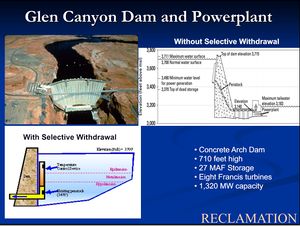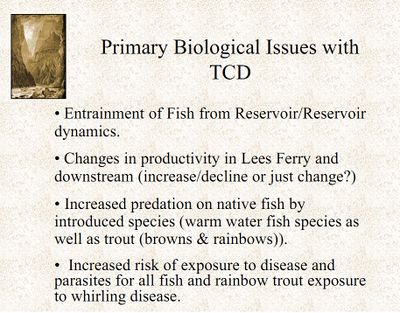Difference between revisions of "TCD Learning Page"
(fix) |
Cellsworth (Talk | contribs) |
||
| Line 12: | Line 12: | ||
<tr style='mso-yfti-irow:0;mso-yfti-firstrow:yes'> | <tr style='mso-yfti-irow:0;mso-yfti-firstrow:yes'> | ||
<td width=40% valign=bottom align=left style='width:2.05in;padding:0in 5.4pt 0in 5.4pt'> | <td width=40% valign=bottom align=left style='width:2.05in;padding:0in 5.4pt 0in 5.4pt'> | ||
| − | <p class=MsoNormal> | + | <p class=MsoNormal></p> |
</td> | </td> | ||
</tr> | </tr> | ||
</table> | </table> | ||
| + | |||
| + | [[Image:TCD Example -PIC.jpg|thumb|left|400px]] | ||
<!-- | <!-- | ||
------------Portal list on righthand side----------> | ------------Portal list on righthand side----------> | ||
| − | |style="width:60%; font-size: | + | |style="width:60%; font-size:120%;"| |
| − | + | ||
| − | + | ||
| − | + | ||
| + | == Temperature Control Device - TCD == | ||
| Line 31: | Line 31: | ||
----------Strapline immediately below banner----------> | ----------Strapline immediately below banner----------> | ||
{| style="width:100%; height:50px" border=1px solid #ccc; background:#cedff2 | {| style="width:100%; height:50px" border=1px solid #ccc; background:#cedff2 | ||
| − | ! style="width=33%; background:#cedff2;" | | + | ! style="width=33%; background:#cedff2;" | <br> |
| − | ! style="width=33%; background:#cedff2;" | | + | ! style="width=33%; background:#cedff2;" | <br> |
| − | + | ! style="width=33%; background:#cedff2;" | <br> | |
| − | ! style="width=33%; background:#cedff2;" | | + | |
|} | |} | ||
| Line 40: | Line 39: | ||
|class="MainPageBG" style="width:55%; border:1px solid #cef2e0; background:#f5faff; vertical-align:top; color:#000;"| | |class="MainPageBG" style="width:55%; border:1px solid #cef2e0; background:#f5faff; vertical-align:top; color:#000;"| | ||
{|width="100%" cellpadding="2" cellspacing="5" style="vertical-align:top; background:#f5faff;" | {|width="100%" cellpadding="2" cellspacing="5" style="vertical-align:top; background:#f5faff;" | ||
| − | ! <h2 style="margin:0; background:#cedff2; font-size:120%; font-weight:bold; border:1px solid #a3bfb1; text-align:left; color:#000; padding:0.2em 0.4em;"> | + | ! <h2 style="margin:0; background:#cedff2; font-size:120%; font-weight:bold; border:1px solid #a3bfb1; text-align:left; color:#000; padding:0.2em 0.4em;">Background</h2> |
| − | + | ||
| − | + | ||
|- | |- | ||
|style="color:#000;"| | |style="color:#000;"| | ||
| − | + | Before Glen Canyon Dam was constructed, the natural flow cycle of the Colorado River included a seasonal warming trend in the late summer as the water temperature would increase from the near freezing winter temperature to approximately 85 degrees. Once the dam was constructed, the temperature of the water released downstream became relatively steady at between 45-50 degrees as water was drawn year round from the deep, fixed level penstock intakes (used for power production). Near the dam, these cold releases are tolerated by the trout fishery, but as this water moves downstream, it only warms to about 60 degrees which is not warm enough to allow endangered, native, warm water fish, such as the humpback chub, to reproduce in the mainstem of the Colorado River. | |
| − | + | ||
| − | + | ||
| − | + | ||
| − | + | ||
| − | + | ||
| − | + | ||
| − | + | ||
| − | + | ||
| − | + | ||
| − | + | ||
| − | + | ||
| − | + | ||
| − | + | ||
| − | + | ||
| − | + | ||
| − | + | ||
| − | + | ||
| − | + | ||
| − | + | ||
| − | + | ||
| − | + | ||
| − | + | ||
| − | + | ||
| − | + | ||
| − | + | ||
| − | + | ||
| − | + | ||
| − | + | ||
| − | + | ||
| − | + | ||
| − | + | ||
| − | . | + | |
| + | The U.S. Fish and Wildlife Service (FWS) issued a biological opinion in 1994, that recommended that temperature control modifications to the existing intake structures at the dam, be investigated by the Bureau of Reclamation (Reclamation). Temperature control modifications would allow for water to be drawn from different depths of the reservoir. Instead of only drawing water from the existing intake openings which are fairly deep and cold, the temperature control modifications would allow for water to be drawn from closer to the reservoir surface, which is much warmer. The goal would be to determine the right temperature combination of the cold and warmer water withdrawals to benefit the native endangered fish, while avoiding the possibility of encouraging competitors (non-native, warm-water fish) into the system. | ||
| + | Many scientists and the FWS believe the ability to increase the dam's discharge temperature is a key element in the recovery of native fish near the Little Colorado River. Reclamation has prepared an Environmental Assessment (EA), with subsequent peer review, on the proposed temperature control modifications and its potential impacts. The [https://www.usbr.gov/uc/rm/amp/tcd/pdfs/pr_ea.pdf peer review], completed April 1999 and the [https://www.usbr.gov/uc/rm/amp/tcd/pdfs/ea_draft.pdf draft Plan and EA], completed January 1999, are available for on-line viewing and as a download for off-line viewing ([ftp://ftp.usbr.gov/uc/anon/envprog/ro/amp/eapr_16.zip download]). (Online viewing is NOT recommended for slow 56/28.8KB) connections). Based on an open, public review of the EA and further consultation with the FWS, Reclamation will decide whether or not to proceed with the $15 million modification. Construction may start as soon as FY-2000 and would be completed in approximately two years. Post construction testing would be accomplished by the Grand Canyon Monitoring and Research Center and Adaptive Management Work Group. | ||
| + | Temperature controls have already been installed on several other dams including: Flaming Gorge, Shasta, Hungry Horse, and Jordanelle Dams. Flaming Gorge Dam on the Green River (a tributary to the Colorado River) is another major dam on the Colorado River Storage Project system, of which Glen Canyon Dam is the key storage unit. Located upstream of Glen Canyon Dam, Flaming Gorge Dam's intake structures were modified with temperature controls in 1978. The result of these controls has been a remarkable positive impact on the river system below the dam. Trout growth rates immediately below the dam increased significantly in response to the warmer water. At the same time, native fish are also doing better downstream, near the Yampa River. Documents concerning the temperature control device are available for your review include: | ||
| + | *[https://www.usbr.gov/uc/envdocs/reports/TCD_ScopingRpt.pdf Scoping Report for the Glen Canyon Dam Proposed Temperature Control Device Environmental Assessment] | ||
| + | *Application of the BETTER Model to Lake Powell by Technical Service Center, Bureau of Reclamation, Denver, Colorado. We provide the option to view this document [https://www.usbr.gov/uc/rm/amp/tcd/pdfs/papr99112.pdf online] or [ftp://ftp.usbr.gov/uc/anon/envprog/ro/amp/gcdtc_model.zip download] (recommended) the file (PDF). | ||
| + | *[https://www.usbr.gov/uc/rm/amp/tcd/pdfs/tcdplan10.pdf Draft Science Plan] to Accompany Environmental Assessment for a Temperature Control Device for Glen Canyon Dam by Grand Canyon Monitoring and Research Center, Flagstaff, Arizona. [https://www.usbr.gov/uc/rm/amp/tcd/] | ||
| + | The [https://www.usbr.gov/uc/rm/amp/tcd/pdfs/workshop.pdf Summary of Findings] from the TCD Workshop held on January 22-24, 2001, is now available. | ||
|} | |} | ||
| − | |||
| − | |||
| − | |||
| − | |||
| − | |||
| − | |||
| − | |||
| − | |||
<!-- | <!-- | ||
| Line 100: | Line 64: | ||
|class="MainPageBG" style="width:45%; border:1px solid #cedff2; background:#f5faff; vertical-align:top;"| | |class="MainPageBG" style="width:45%; border:1px solid #cedff2; background:#f5faff; vertical-align:top;"| | ||
{| width="100%" cellpadding="2" cellspacing="5" style="vertical-align:top; background:#f5faff;" | {| width="100%" cellpadding="2" cellspacing="5" style="vertical-align:top; background:#f5faff;" | ||
| − | ! <h2 style="margin:0; background:#cedff2; font-size:120%; font-weight:bold; border:1px solid #a3b0bf; text-align:left; color:#000; padding:0.2em 0.4em;"> | + | ! <h2 style="margin:0; background:#cedff2; font-size:120%; font-weight:bold; border:1px solid #a3b0bf; text-align:left; color:#000; padding:0.2em 0.4em;">Links</h2> |
|- | |- | ||
|style="color:#000;"| | |style="color:#000;"| | ||
| − | + | ||
| − | + | ||
| − | + | ||
| − | + | ||
| − | + | ||
|- | |- | ||
| − | ! <h2 style="margin:0; background:#cedff2; font-size:120%; font-weight:bold; border:1px solid #a3b0bf; text-align:left; color:#000; padding:0.2em 0.4em;"> | + | ! <h2 style="margin:0; background:#cedff2; font-size:120%; font-weight:bold; border:1px solid #a3b0bf; text-align:left; color:#000; padding:0.2em 0.4em;"> Presentations and Papers </h2> |
|- | |- | ||
|style="color:#000;"| | |style="color:#000;"| | ||
| − | * | + | |
| + | *[http://www.usbr.gov/uc/rm/amp/amwg/mtgs/10aug24/Attach_12a.pdf| 100824_AMWG Meeting- Attachment 12.a] | ||
*[http://www.usbr.gov/uc/rm/amp/amwg/mtgs/01apr12/Attach_08a.pdf TCD PowerPoint Presentation_April 2001 AMWG] | *[http://www.usbr.gov/uc/rm/amp/amwg/mtgs/01apr12/Attach_08a.pdf TCD PowerPoint Presentation_April 2001 AMWG] | ||
*[http://www.usbr.gov/uc/rm/amp/amwg/mtgs/01apr12/Attach_08b.pdf TCD Summary_April 2001 AMWG] | *[http://www.usbr.gov/uc/rm/amp/amwg/mtgs/01apr12/Attach_08b.pdf TCD Summary_April 2001 AMWG] | ||
| Line 119: | Line 80: | ||
*[http://www.usbr.gov/uc/rm/amp/amwg/mtgs/00jan20/Attach_13.pdf TCD Monitoring Presentation_Jan 2000 AMWG] | *[http://www.usbr.gov/uc/rm/amp/amwg/mtgs/00jan20/Attach_13.pdf TCD Monitoring Presentation_Jan 2000 AMWG] | ||
*[http://www.usbr.gov/uc/rm/amp/amwg/mtgs/97sep10/Attach_10.pdf Temperature Control Device Update_Sept. 1997 AMWG] | *[http://www.usbr.gov/uc/rm/amp/amwg/mtgs/97sep10/Attach_10.pdf Temperature Control Device Update_Sept. 1997 AMWG] | ||
| − | |||
| − | |||
|- | |- | ||
| Line 126: | Line 85: | ||
|- | |- | ||
|style="color:#000;"| | |style="color:#000;"| | ||
| − | *[[File:Biological Issues with TCD- PIC.jpg | | + | *[[File:Biological Issues with TCD- PIC.jpg |400px]][http://www.usbr.gov/uc/rm/amp/amwg/mtgs/01apr12/Attach_08a.pdf] |
<br> | <br> | ||
|} | |} | ||
Revision as of 13:51, 23 July 2018
|
|
Temperature Control Device - TCD |
| |
|
|
|---|
|
|

